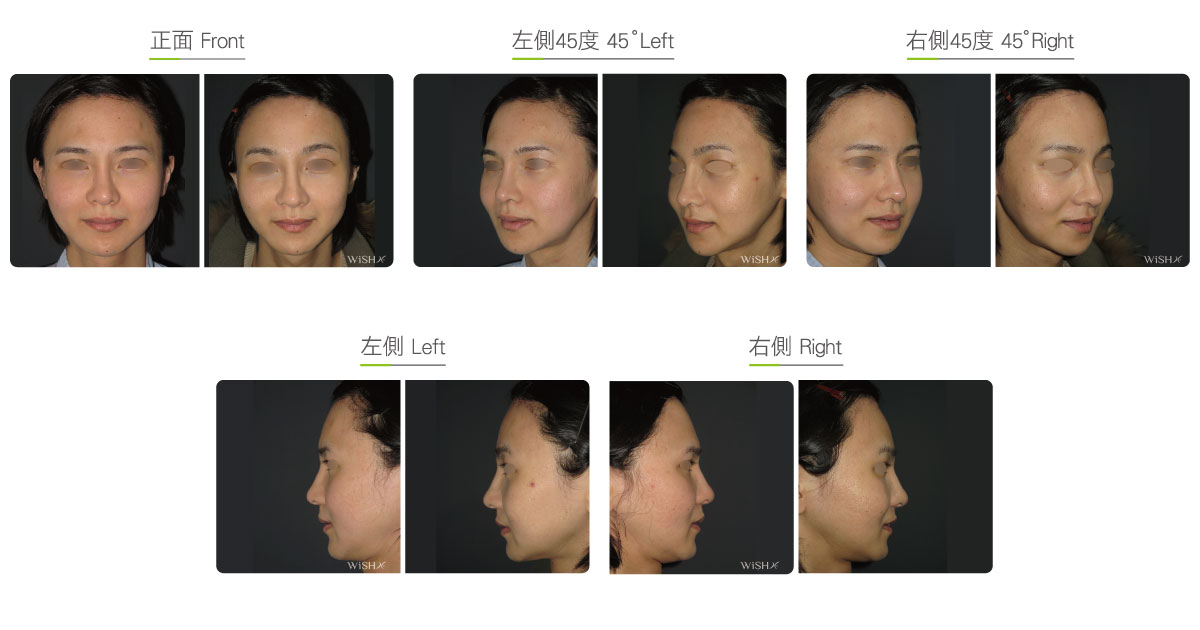Hairline/Forehead Plastic Surgery
There are distinct differences between male and female forehead shapes and hairline distribution, which are therefore also integrated into transsexual facial reconstruction. The standard male forehead is generally relatively flat and broad, with the eyebrow bone distinctly prominent; the hairline is also relatively low, with the eyebrow appearing linear or straight. On the contrary, the female forehead is mostly round and full; it is relatively wide at both sides, and the hairline is generally high, with the eyebrow bridge slanted upward. Due to various different characteristics between male and female foreheads, such a distinction should be taken into account in the evaluation for a transsexual facial change, and both the bone and skin are altered to attain complete results. Common surgical conditions and options are as follows:
Male-to-female patients
The emphasis of this surgery is to soften the lines of the male forehead, elevate the hairline, and lift or adjust the eyebrow shape. The surgery is generally conducted via an incision (in the scalp) behind the forehead hairline. Common surgeries comprise forehead and eyebrow bone shaving osteotomy, forehead and eyebrow lifts, or combined autologous fat filling of the forehead or temple depression, which sculpt a feminine plumped up and round forehead line and mitigate the prominence of the forehead or eyebrow bone and also indirectly alleviate the overtly deep or sunken eye sockets.
Female-to-male patients
The highlight of this surgery is enhancing the prominent lines of the eyebrow bone or lowering the hairline and eyebrow position. The surgical incision is behind the hairline, but if the hairline is to be lowered, the incision should be created at the border of the forehead skin and hair (hairline incision). Surgical conditions generally encompass forehead implant emplacement, Gore-Tex eyebrow bone enhancement, and hairline lowering surgery. The surgery aims to deepen the eyebrow bone and eye socket, lower the curvature and height of the eyebrow, and bring down the hairline to sculpt a masculine angular forehead appearance similar to that of the male forehead.
Surgical conditions
Duration
- Type of anesthesia: General anesthesia
- Type of incision: A 15–20-cm incision within the hairline or scalp (bi-coronal incision)
- Recovery: 7–10 days
- Removal of stitches: 10–14 days
General instructions
No food and water on the day of surgery
- Avoid smoking and alcohol for 1 month postoperatively.
- Avoid hair perming or dying for 2 months postoperatively.
- Pay attention to scalp care for 3 months postoperatively to prevent hair loss.
Ideal candidates
- Female-to-male patients with a relatively high hairline or eyebrow shape
- Female patients with a too round forehead or flat eyebrow bone
- Male-to-female patients with a too narrow or flat forehead
- Male patients with a relatively low hairline or downward eyebrow
Possible complications
- Poor wound healing
- Regional alopecia
- Scalp scar
- Scalp or forehead numbness (temporary)
Surgical advantages
-
It is able to improve the forehead appearance, eyebrow shape, and hairline height.
-
It is able to sculpt a male and female characteristic forehead appearance by changing the hairline/eyebrow height and forehead width.
-
As the surgical scope is limited to the forehead, surgical risks are lower than those with facial bone surgeries.
Surgical drawbacks
-
Combined with bone and skin reconstruction, the surgery could take a long time and present a slow recovery.
-
A scar may be left at the border of the scalp or hairline after the operation.
-
The scalp or forehead may show temporary or persistent numbness.
-
The incision within the scalp may present hair loss.

